Gluten-free baking recipes and guide includes tips for making every recipe with success. Not only will you find what makes baking gluten-free different, but hacks for avoiding mishaps with easy-to-follow recipes.
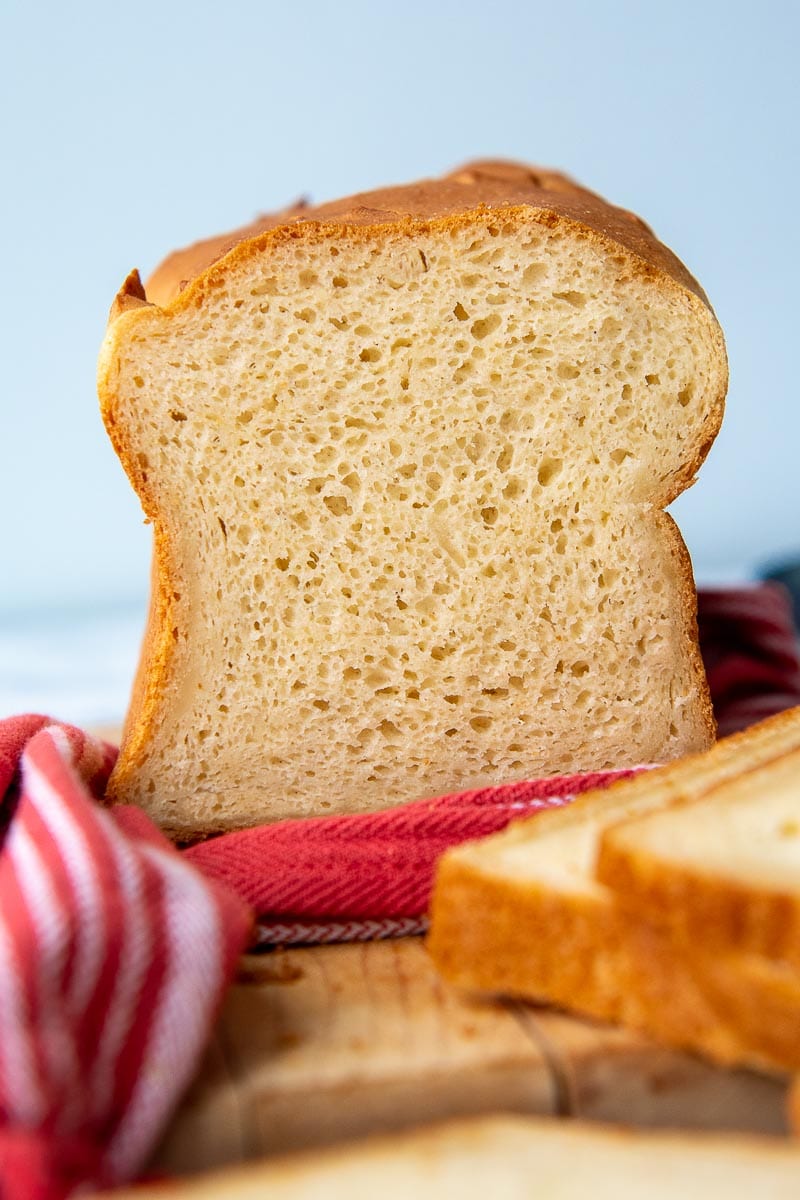
differences in gluten-free baking
Gluten-free baking requires a certain finesse to make recipes turn out just as good as ones made with wheat flour. Unfortunately it’s not always simple as substituting an equal amount of gluten-free flour.
Gluten is a protein found in wheat, barley, and rye. It gives elasticity, chewiness, and structure to those grains. Therefore, starches free of gluten have a tendency to be grainy or easily crumble.
When baking gluten-free, something has to be added to mimic elasticity and structure in order to shape the dough, activate leavening agents, and yield a pleasing baked texture.
Learn below everything you need to know to make gluten-free baking a success and you will forever enjoy the best gluten-free breads, dessert, gluten-free Christmas cookies, and more!
gluten-free binders
Gluten creates elasticity and binds fibers together. With the absence of this in gluten-free baking recipes, something has to be added to replicate this effect.
There are several gluten-free binders, which can be added on their own or in addition to the binder included in the flour blends. Read GF all-purpose flour ingredient labels to see if the mix contains a binder before adding additional.
Generally, gluten-free breads require more binders and leavening agents, while it can be scaled back in pastries and cookies. This is why some bakers prefer to use a flour blend without xanthan and add an appropriate amount based on the recipe.
Below are the most common gluten-free binders used in baking recipes.
- Xanthan Gum – Most commonly used for mimicking the structure and elasticity in gluten.
- Arrowroot Powder – Used as a thickening agent and a great alternative to cornstarch.
- Psyllium Husk – A great addition to xanthan gum in breads because it helps with structure and maintains moisture. In fact, I swear by this secret ingredient so much I dedicated an entire post on the benefits of psyllium husk in gluten-free baking.
- Guar Gum – Interchangeable with xanthan gum in recipes, but does add a bit of a starchy flavor.
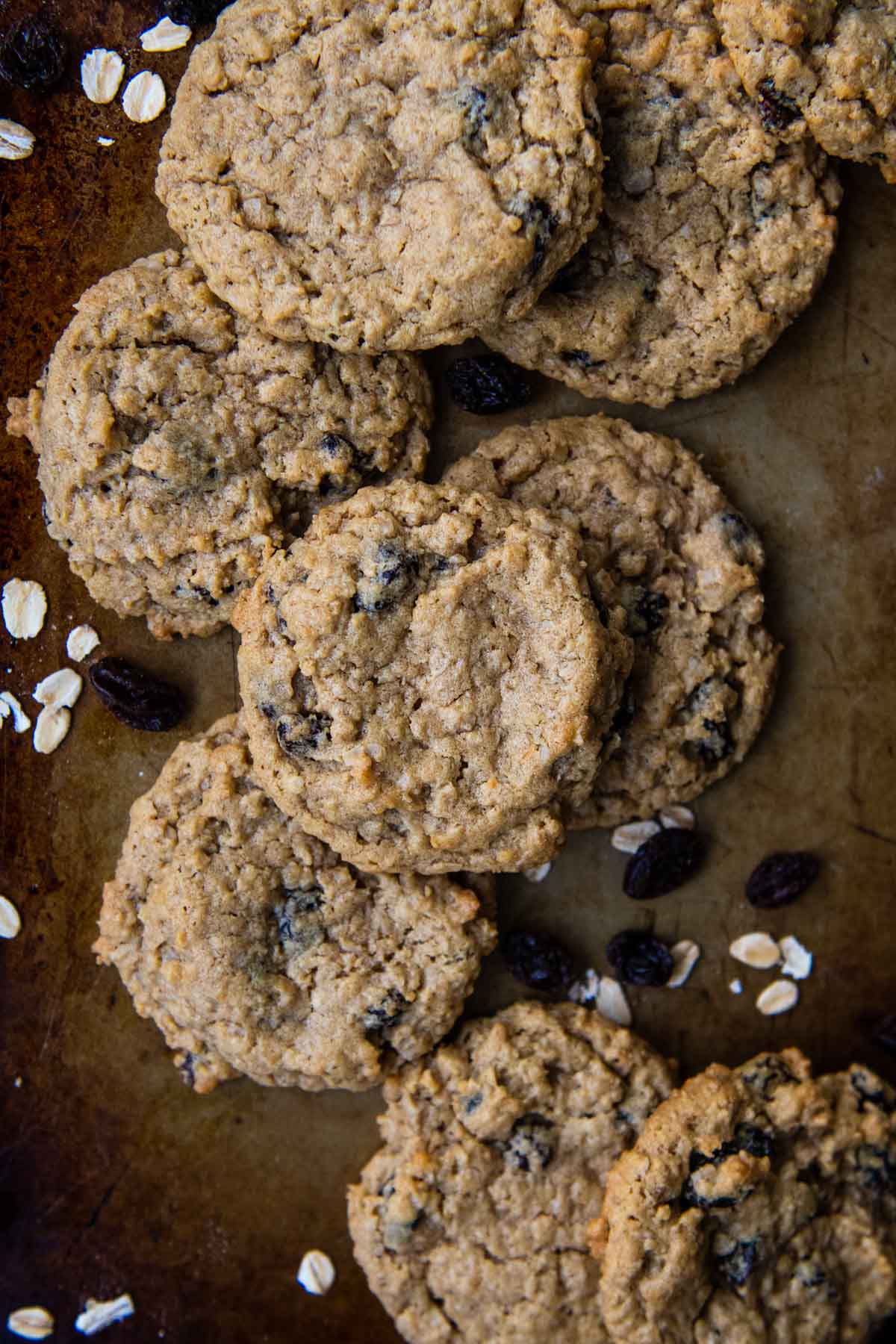
Working with gluten-free flour
Luckily it’s now easy to find all-purpose gluten-free flour blends right in your local grocery store. Unfortunately, they aren’t all created equal.
They’re beneficial because bakers can substitute 1:1 ratio in recipes without measuring out different starches. So, if a traditional cookie recipe calls for 2 cups all-purpose flour, you should be able to substitute 2 cups of gluten-free flour.
However, poor quality gluten-free flours taste gritty and leave baked goods flat. Plus, there’s inconsistency among the brands. Since they are made up of varying ratios of starches, like brown rice flour, tapioca starch, potato flour, and many others, there isn’t a standard taste, texture, or quality to be expected.
Therefore, I wrote a more elaborate guide on which gluten-free flour is the best. I made several gluten-free baked goods and blind taste-testers judged on taste, texture, and appearance.
There was a clear winner in the experiment and when developing recipes for my gluten-free cookbook, but this flour may not work for everyone. When choosing your own preferred gluten-free baking flour consider…
- Price, especially if you do a lot of gluten-free baking
- Ingredients – Some gluten-free blends contain allergens, such as diary and corn
- Xanthan Gum – Some baking mixes do not contain xanthan gum. This is what simulates gluten and binds baked goods together. If your mix doesn’t contain it, it must be added separately.
There are also alternatives to working with an all-purpose GF flour. Personally I find a lot of success when working with oat flour recipes because it’s affordable and has a pleasing taste. Nut flours, such as almond flour recipes, are another option for it’s great taste, plus it’s low carb.
Best Gluten-Free Baking Tips
The tricks to being successful with baking gluten-free are quite simple, but some are counter-intuitive to traditional baking. This is where a lot of baking mishaps come in.
Following the simple tips below will avoid dense, gummy textures, grittiness, or issues with rise and structure.
These tips and tricks will not work for every recipe, but they are a great general guide for becoming more familiar with gluten-free recipes and what makes a recipe successful. I find them particularly helpful when converting a traditional recipe to gluten-free.
1. Over mix gluten-free batters
This goes against a traditional baking “rules.” Usually over mixing makes baked goods dense and rubbery. It has the opposite effect with gluten-free recipes.
Mixing batters longer aerates the starch fibers. An extra long stir gives baked goods a better rise, lighter crumb, and better structure, like nice domed tops. This is especially useful for breads, cakes, and muffins.
2. Let the batter rest
Gluten-free flours do not absorb liquids or fats as well as regular flour. Allowing time to rest gives the starches time to hydrate and soften, which helps offset a gritty texture and taste.
Cover the bowl with plastic wrap and let the batter sit for 30 minutes before baking. Use this hack with breads, biscuits, pancakes and muffins.
3. extend gluten-free baking time
Inserting a toothpick or testing for spring back when touched are standard clues for knowing when baked goods are done. These tests are unreliable with gluten-free baking, though.
As mentioned previously, gluten-free starches do not absorb liquids as well. Therefore, some gluten-recipes seem done by looks and touch, but are actually undercooked in the middle.
To throughly check use a long cake tester and insert further down than a toothpick. A more reliable method, especially with breads and cakes, is to use an instant read thermometer. It should read around 200ºF.
As long as the baked good aren’t burning, it will not harm to bake longer, and it will offset grittiness or gumminess. A gentle method of doing this is to turn off the oven at the end of baking and let it sit for a few minutes longer.
4. Bake flourless recipes
Using flourless recipes have less margin of error and are generally more affordable because gluten-free flour isn’t an ingredient!
There are many flourless cookie recipes, but many other recipes can be included as well. Below are a sampling of may favorites.
- Flourless Chocolate Cookies
- Banana Oat Waffles
- Almond Flour Brownies
- Oat Flour Banana Bread
- Almond Flour Muffins
- Oatmeal Pie Crust
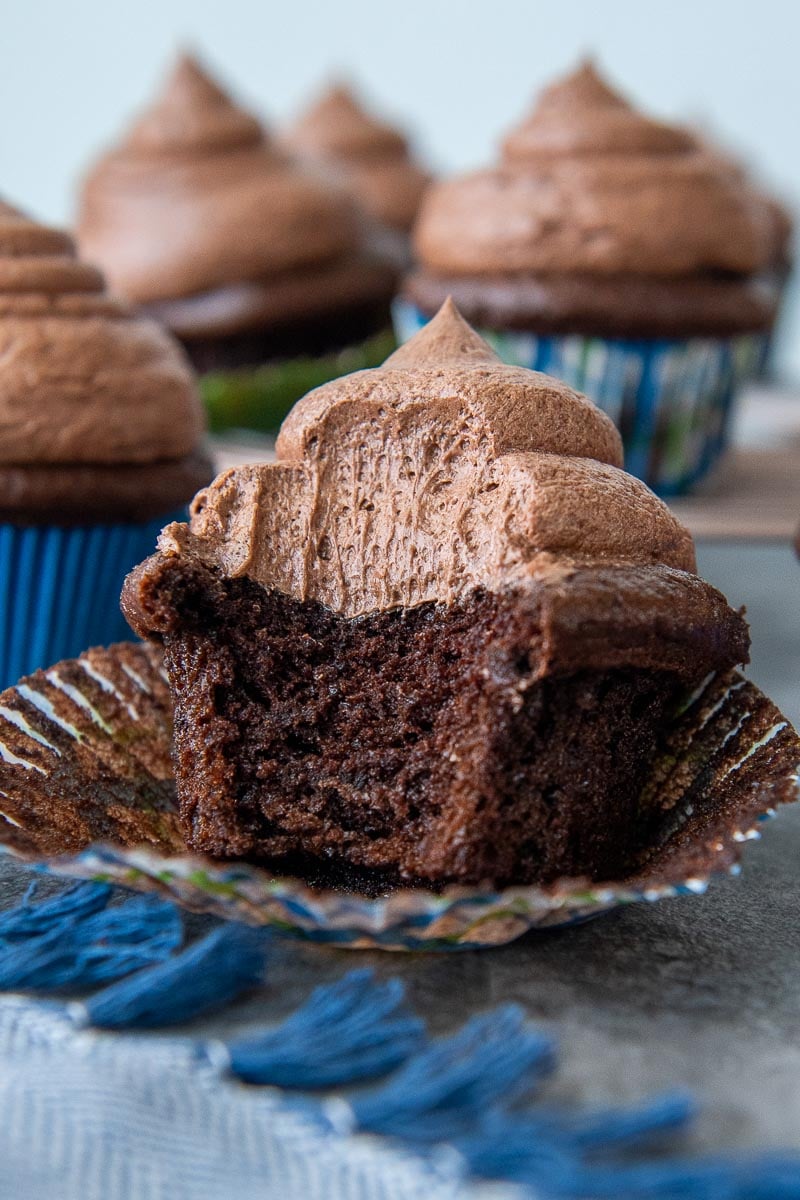
faq’s and troubleshooting
Since gluten-free starches are finer than wheat flour, scooping the measuring cup into the bag and leveling may lead to measurement inconsistencies.
For more accurate measuring, gently spoon the flour into the measuring cup and then level off. This will not compact the flour, giving a more consistent volume.
Baking powder, a dry chemical leavening agent, does not contain any gluten ingredients. However, you may be wondering about gluten-free baking powder because some commercial brands outside the U.S. contain moisture inhibiting ingredients. Wheat may be added to keep it fresh and prohibit activating prematurely.
If you are buying baking powder in the U.S., they contain cornstarch or potato starch, so they are safe. Read ingredient labels outside the United States to make sure it is not contaminated.
This is most likely a leavening agent, timing, or temperature problem, leaving the center underbaked.
Gluten-free baking requires a longer bake time because moisture doesn’t evaporate as quickly from gluten-free flour. If you are questioning if it is done or not, turn the oven off and let it sit with the door closed for a few additional minutes.
If there was too much leavening agent (baking powder or soda) or too high of a temperature, it will rise too quickly, sinking after it cools. This could also happen if there are too many disruptions in temperature, such as opening and closing the oven door frequently.
To offset this, reduce the oven temperature slightly and let your baked goods cook longer, extending time for moisture to evaporate and making a more gentle rise.
This happens when there is too much moisture or it didn’t have enough bake time to evaporate.
Since liquids don’t absorb in gluten-free starches as well, recipes with a lot of liquid have a tendency to be gummy. Swapping some of these liquids for yogurt or sour cream helps maintain moisture with a fluffy texture.
Reducing the oven temperature and baking longer also helps. Once it’s done baking, turn off the oven and let it sit for a couple minutes to ensure it is done baking. Then use a long cake tester to be sure it’s done throughout.
Gluten-free recipes have a shorter shelf life because moisture has a harder time absorbing into the starches. Therefore, when gluten-free baking, I recommend freezing leftovers the same day.
This also duly serves as a way to always have gluten-free breads, muffins, and cookies on hand, which is helpful in a mixed-diet family. If you are cooking gluten-free for kids, this is ideal for always having something available for treats and special occasions.
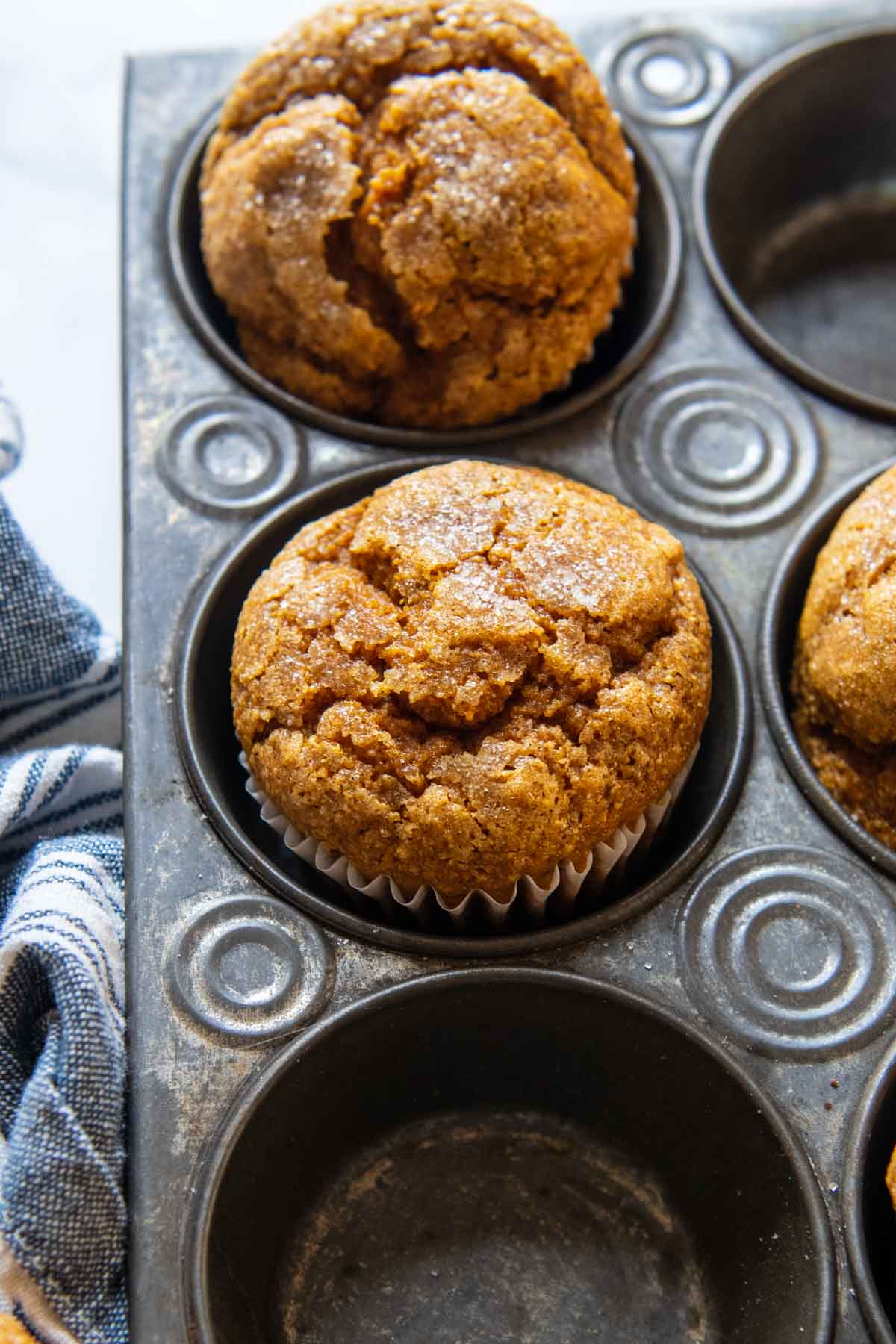
gluten-free desserts
Luckily gluten-free desserts are the most forgiving recipes to make. Sweetness and sugar do wonders for masking any off-putting tastes or textures. However, the best gluten-free dessert recipes not only taste amazing, but are also so good, no one knows they are gluten-free!
- Gluten-Free Cupcakes
- Gluten-Free Zucchini Cake
- Almond Flour Brownies
- Gluten-Free Whoopie Pies
- Ultimate Scotcheroos
- Gluten-Free Blondies
- And many more gluten-free desserts!
gluten-free pies
If you are looking for a complete guide to making the best gluten-free pies, this article has everything from creamy, no bake, fruit, custard pies, and a variety of gluten-free pie crusts! Some of my favorite gluten-free pies and crusts include…
- Gluten-Free Key Lime Pie
- Flaky Gluten-Free Pie Crust
- Frozen Lemon Pie
- Gluten-Free Chicken Pot Pie
- Oatmeal Pie Crust
gluten-free cookies
The most common problem with gluten-free cookie recipes are too much spreading and grittiness. Generally letting the dough sit before baking helps offset grittiness, and adjusting the amount of fat helps the structure.
- Copycat Gluten-Free Crumbl Cookies
- Gluten-Free Chocolate Chip Cookies
- Almond Flour Peanut Butter Cookies
- Gluten-Free Sugar Cookies
- Chocolate Chip Oat Flour Cookies
- Gluten-Free Chocolate Cookies
gluten-free breads
Gluten-free bread recipes require no kneading and often uses baking powder with the yeast to help with the rise. Mixing the batter the longer helps offset grittiness and a good balance of dry ingredients with moisture prohibits gumminess in the loaf.
- Gluten-Free Bread Recipe
- Gluten-Free Zucchini Bread
- Gluten-Free Challah
- Oat Flour Bread
- Gluten-Free Banana Bread
- Best Gluten-Free Hamburger Buns
- Soft Gluten-Free Cinnamon Rolls
- Gluten-Free Breadsticks
- Gluten-Free Bagel Recipe
gluten-free muffins
Like desserts, gluten-free muffin recipes are more forgiving because of the sugar and shorter bake time. They are also ideal for freezing and supplying gluten-free breakfasts or snacks!
- Oat Flour Muffins
- Gluten-Free Pumpkin Muffins
- Fluffy Gluten-Free Banana Muffins
- Gluten-Free Apple Muffins
SAVE THese gluten-free baking recipes TO YOUR PINTEREST BOARD!
Let’s be friends on Pinterest! I’m always sharing great recipes!
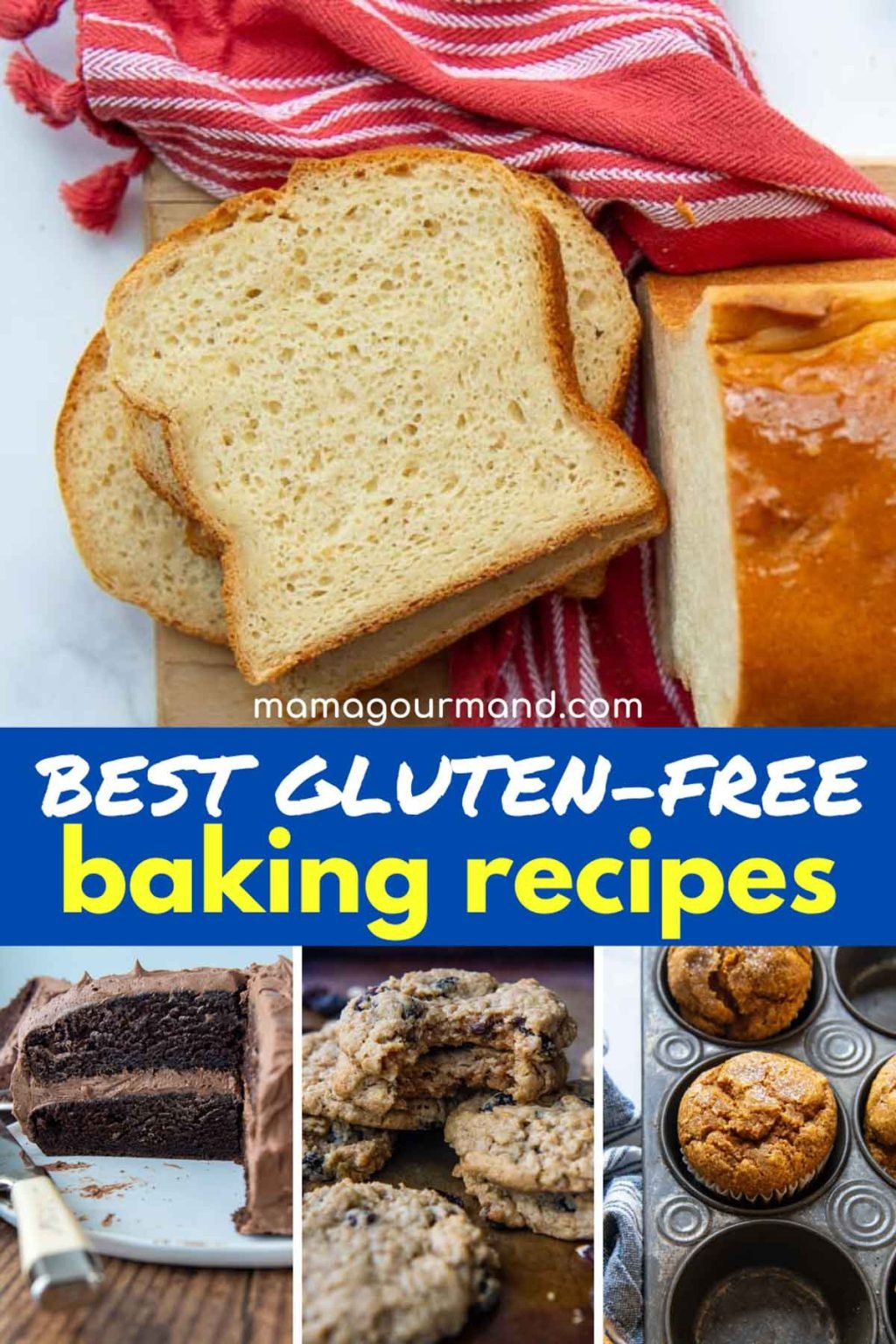
This post contains affiliate links. My opinions are always my own. If you purchase a product through an affiliate link, I make a small commission – at no cost to you. Read full disclosure policy here.

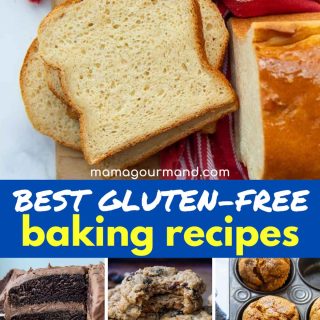
Leave a Reply